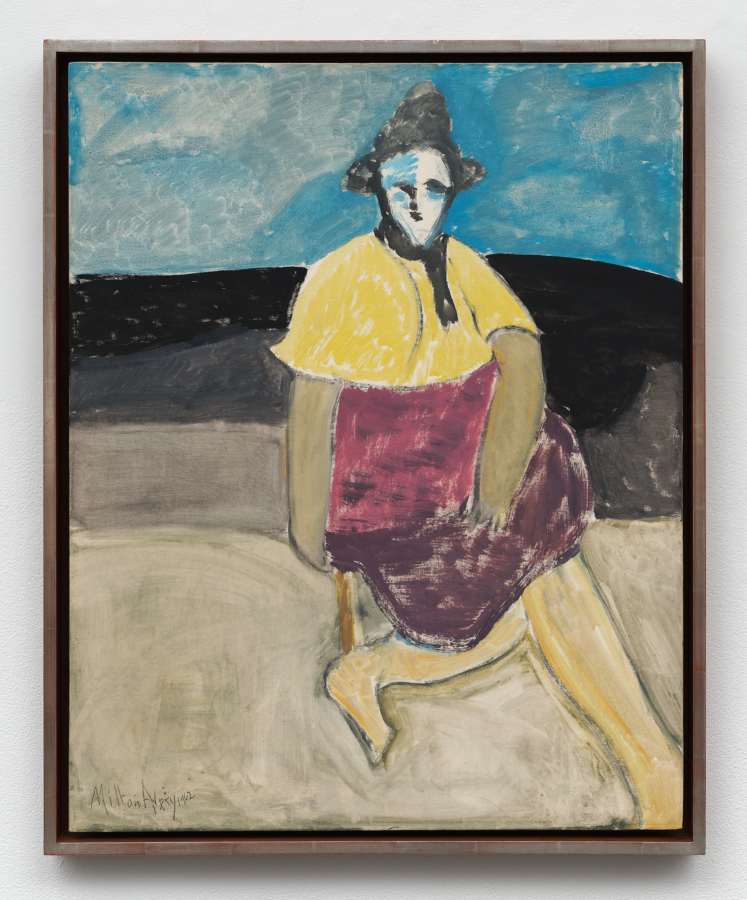Arts Magazine, Summer 1986.
One may refer to Jean Baudrillard’s relatively early essay entitled “Gesture and Signature” from his book For a Critique of the Political Economy of the Sign (1972) to locate an integrated structuralist/Marxist analysis of the relationship between the paradigm of serial repetition as manifested in certain types of modernist practice, such as Pop Art, and the corresponding systemization of consumption or circulation of ‘everyday’ objects. Radically extending the totalizing or one-dimensional conception of industrial (consumerist) capitalist society introduced and examined by members of the Frankfurt School, Baudrillard attempts to foreground the transfiguration of the function of the art object as it assumes a homological relation- ship to the circulating mechanisms of consumption. Ab- sorbed within this structure, the art object asserts its difference from everyday objects, yet paradoxically simulates the immanent structure of commodity- production through an implicit or explicit seriality.
For Baudrillard, this systematized condition removes the possibility of a transformative art practice. Artists (such as Warhol) have begun to develop strategies of seriality which are purposefully (yet perhaps not critically) borrowed from the model of industrial production. Warhol has stated that “reality has no need of an intermediary; it is necessary only to isolate it from the surroundings, transfer it to the can- vas.” For Warhol, the transposition of the commodity emblem from the sphere of the social into the realm of the aesthetic is not an act of transgressive, critical terrorism, but a relatively neutral maneuver designed to produce an expedient sameness.
Baudrillard has noted that “everydayness is difference in repetition,” yet he also has located the paradox that characterizes the contradictory nature of the modern (or postmodern?) art object. On the one hand, the art object is a product of a subjective activity which an artist such as Warhol at- tempts to deny and remove in order to be replaced by a regulated system of dissemination; on the other hand, the art object must simultaneously reference or signify the condition of the everyday; thus the art object is ‘always al- ready’ differentiated from the everyday object, although on one level it will remain within the domain of the commodity. Art calls attention to itself as it is ‘caught’ attempting to reproduce and conjugate itself according to the principles of exchange and consumption; the ‘representation’ of these mechanisms becomes a latent criticality.
Peter Halley, who has embraced the ‘simulation model’ of analysis utilized by Baudrillard in later writings such as Simulations, seems to have similarly welcomed the implicit nihilism contained in these treatments of con- temporary society. In the brief theoretical essay issued during his latest exhibition, Halley claims that, among other transformations, “the abstract becomes the real, and the entire environment becomes a model of the environment…. Thus there is not only the reality of the model, but there is also no other reality other than that of the model.” Further on, Halley contends, “Likewise, in this universe, by virtue of psychology and physiology, human beings can be only models of human beings.”
It seems evident that, on the level of theory, Halley has taken Baudrillard’s already ‘totalizing’ conception of communication society, wherein the system of objects, previously characterized as an assembly of ‘signs heavy with meaning’, has been dissipated within the networks of circulating channels of communication, and has arrived at a discourse on con- temporary life which is conspicuously one-dimensional and disingenuously nihilistic. It is significant (and troubling) that this type of critical method has superseded other Marxian or post-structuralist positions (such as the work of Jameson and elements of Foucault) that have not dispensed with the categories of the ‘defining subject’ and struggle on the level of social contradiction and the power relations formed from this disparity. The current avail- ability (and seductiveness) of this language of pseudo-opposition al- lows Halley to define himself (and be defined) as a socially critical artist. Yet Halley wants to have his cake and eat it, too.
On the one hand, Halley announces that “the vocabulary of modernism is retained, but its elements, already made abstract, are finally and completely severed from any reference to any real.” On the other hand, Halley views his art practice as a critical (or self-critical) inquiry into geometric structures (the grid, cell, and conduit) which not only reference and deconstruct the history of idealist non-objective art (e.g., Malevich, Mondrian, Newman), but more significantly function as metaphors for the implicit governing networks of social communication, labor, and power. The paintings become emblems of this ideology of geometric signs. According to Halley, “Geometric signs still remain the most ubiquitous and influential in our society.”
The contradictory nature of this position is abundantly clear, for Halley wishes to argue simultaneously that the language of neo- modernism is incapable of referencing the ‘real’, yet his paintings, seemingly exempt from this crisis of signification, function critically as metaphors of an identifiable social referent. According to Halley, this ‘real’ is a simulation or model of itself, and one would conclude that he defends his paintings as symbolic ‘models’ of an archetypical structure located within social life, a structure which is totalizing in its unrelenting consumption, circulation, and neutralization of difference-as-opposition.
The central question provoked by this work becomes an issue of political exigency: is it tenable to endorse the world-view offered by Halley’s prisonhouses of social organization? As Baudrillard has stated, “The world only really becomes mechanical from the moment it can no longer be evoked save mechanically.” Halley’s project reveals itself to be an uncritical, acquiescent acceptance (and imposition) of a monolithic sys- temization of social life, within which the still extant social, economic, and cultural contradictions of late capitalism are condoned.
(International with Monument, April 3-May 4)



